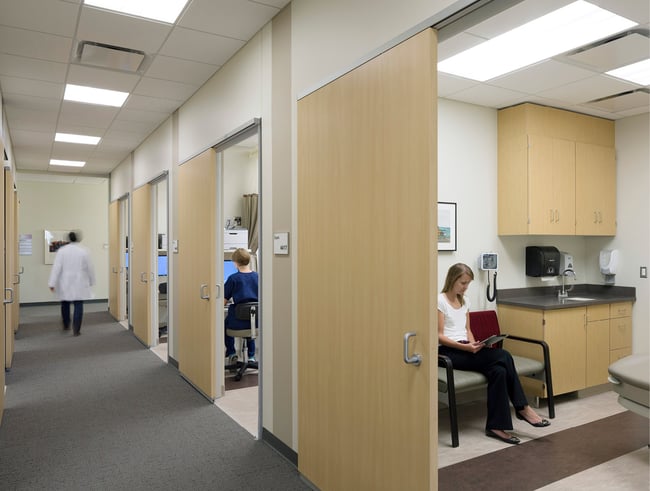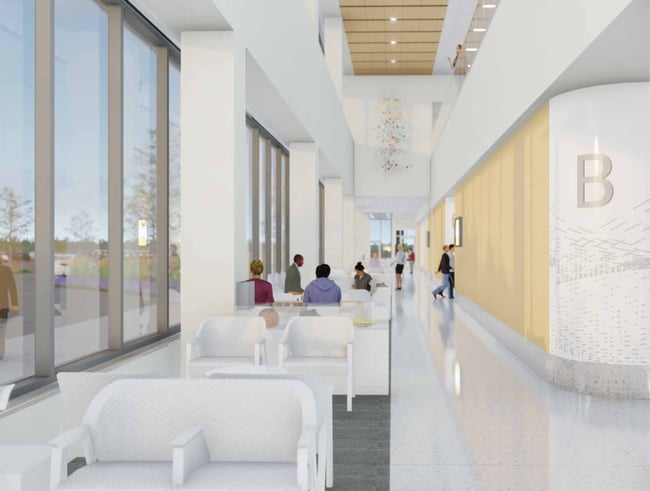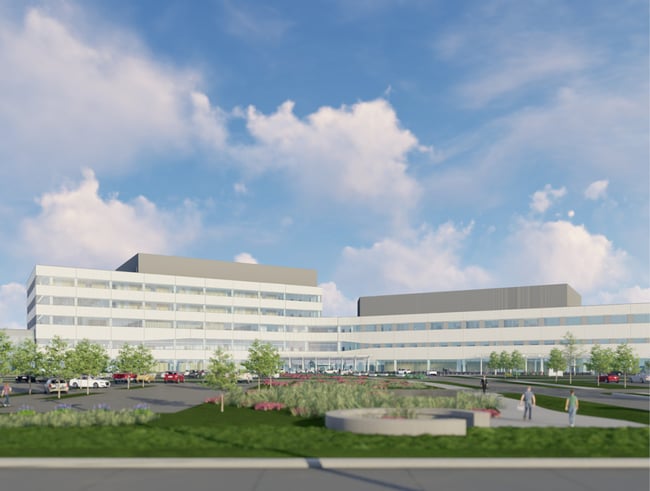Patient Journey Mapping in Healthcare Design

Buildings are designed for occupants. The architectural process should involve those who use the space daily and lead to solutions that fit their needs.
On large building projects—like healthcare facilities—it is difficult, if not impossible, to engage every potential user. The best approach is to research users—including staff and patients—and consider their thoughts and feelings.
One way to better understand users is through a process called journey mapping. We have performed journey mapping on many projects, including UIHC at Forevergreen Road. In our experience, journey mapping creates a more intentional design process and leads to solutions that enhance the patient and staff experience.
This article will explain journey mapping, its benefits in the healthcare industry, and how it influences design decisions.
Understanding Patient Journey Mapping
Patient journey mapping is a tool to help you and your design team better understand your patients’ experience. It follows their journey from the moment they start communicating with a healthcare organization until they complete care.
The goal is to visualize a patient’s point of view—what they are thinking and feeling throughout the experience. Analyzing their thoughts and feelings can help identify moments of influence where you and your design team can make improvements.
Journey mapping is a holistic way to enhance patient care. While some of the identified solutions may relate to building design, other solutions may be technological or administrative.

Journey mapping analyzes every stage of the patient's experience.
The Journey Mapping Process
Journey mapping occurs in the early stages of the architectural process before your design team develops schematic concepts. It starts with surveying healthcare professionals and asking them to describe the day-in-the-life activities and experience of a patient.
Surveys should ask about different services and patient types. For example, how does an emergency room experience differ from an outpatient experience for a specific specialty?
A more in-depth analysis may also involve patient interviews to give your design team a better understanding of your market. For example, are patients from rural or urban areas? Do they travel long distances for care? How would they describe their previous experiences at your facilities?
Staff surveys and patient interviews can lead to empathy mapping. Your design team may develop fictionalized personas for different patient types and describe their values, concerns, and fears.
In a meeting with your design team, you will discuss the patient personas and create a flow map of each patient’s experience. The map should span from the moment a patient seeks care until the moment they end their interaction with your team, including moments like:
- Receiving directions
- Arriving at the facility
- Parking
- Walking to the door
- Navigating the building
- Checking in at their destination
- Receiving care
- Exiting the facility
Charting this experience makes it easier to identify ways to improve care. It also helps define project goals that will drive future design decisions.
The Benefits of Patient Journey Mapping
Journey mapping can be done for any building project, but it is especially beneficial in healthcare.
Seeking healthcare can be a stressful and vulnerable experience for patients, but journey mapping can help identify pain points. For example, healthcare facilities can be large, confusing, and intimidating. Considering how patients enter and navigate the facility can improve wayfinding.
This type of research provides financial benefits as well. When patients have better experiences, healthcare providers see improved Consumer Assessment of Healthcare Providers and Systems (CAHPS) scores. Improved care can also lead to faster recovery times and quicker patient turnarounds, allowing providers to serve a greater number of patients.
Although journey mapping often focuses on the patient, it benefits the staff as well. Patient pains can highlight staff pains. For example, long wait times may point to internal inefficiencies.
Design solutions like reducing the number of steps between the nurse’s station and the exam room can make the staff more effective—improving retention rates and the quality of care.
Translating Journey Mapping to Building Design
Journey mapping helps you and your design team vet design decisions through the patient’s experience, leading to solutions that enhance their experience. To explain this process, it helps to look at a real-world example.
On the UIHC at Forevergreen Road project, flow maps led to early conceptual diagrams and floorplans. The goal was to make the journey from the parking lot to the exam room as intuitive as possible.
The entrance is visible from the parking lot, and when patients enter, they can see the elevators. Signage helps patients identify which floors they need, with graphics for each destination.
Elevators exit at check-in desks, brightly lit to draw the patients’ attention. In waiting areas, patients have a view of the check-in desk and the parking lot, giving them a clear sense of their orientation within the building.

The parking lot is visible from the waiting area.
This simplified layout reduces stress and provides a sense of security—pain points identified during the journey mapping process.
Patient journey mapping also influenced the site design. The UIHC system serves patients across rural Iowa and parking is a concern for out-of-town visitors. The team opted for an on-grade approach, rather than a parking facility.
The parking lot is no more than four rows deep, reducing total travel distance and making it easier for patients to find their vehicle after exiting the facility. On-grade parking also benefits patients with mobility issues by minimizing elevation changes.

On-grade parking minimizes stress and improves accessibility.
Learn More About Healthcare Design
Journey mapping leads to a patient-centric design process. It helps you consider the patients’ experience—even when patients are not directly involved in the design process.
Often, healthcare design is data-driven. We rely on tested best practices when making design decisions. In addition to data, it is important to remember the subjective experience of individuals. Journey mapping helps keep the patient top-of-mind.
While journey mapping influences site and floor plans, it can also help healthcare teams determine the look and feel of the facility. The patients’ experience factors into lighting, views, and finishes. Learn more by reading about the principles of trauma-informed design.